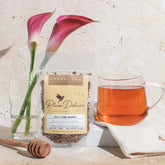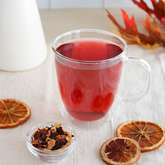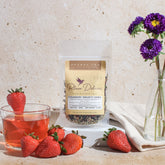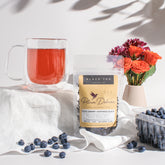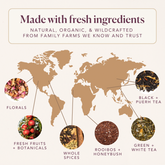Foods and drinks high in acid have been linked to a number of potential health problems, causing issues with everything from digestion to dental health. Of course, it’s easy to link acids to our morning orange juice, but what does it have to do with tea?
First, we’ll go over what “acidic” means, then onto what can make a tea acidic and what that might mean for you. We'll also cover some of our favorite low-acid tea.

What’s Up With Acids?
An acid is, simply put, a substance with a pH level below seven. Some of the more well-known are citric acid, found in orange juice and the like, and the far more frightening sulfuric and nitric acids.
Their less famous opposite counterparts are known as alkalis, but it’s important to know that “not acidic” doesn’t mean “not caustic.” Both extremes have their dangers, but those are far beyond what we’ll have to consider here. There are also more neutral solutions, like water.
For many people, the acid in tea isn’t an issue, but for those with certain dietary or medical issues, it can definitely be worth considering. Folks prone to stomach upset or who are just feeling nauseous at the moment can also benefit from keeping a few things in mind.

Components of a Cuppa: What Makes Tea Acidic?
Type of tea. How the tea leaves are processed matters a lot to how acidic it is. Black tea, for example, is oxidized, thus giving it its distinctive color and flavor profile. However, this process does make it more acidic than other teas. If you’re interested in the differences, check out this article on different types of tea.
Steeping time. The longer a tea stays in the water, the more flavors that are extracted. As anyone who’s forgotten a steeping cuppa, however, this isn’t necessarily a good thing. In addition to bitter tannins (not to be confused with tannic acid), more caffeine is extracted as well. While caffeine isn’t itself acidic, it can cause the body to produce more gastric juices, leading to an upset stomach.
If you’re specifically looking for a less robust cup, you can certainly cut down on your steep time, though you’ll also lose out on some flavor. Check out this article for some tips on how to steep your tea.
Brewing method. A hotter brewing method means more caffeine extraction, so try cold-brew tea for a lighter experience.
Ingredients. This can work both for and against you. Additional ingredients in a blend by definition mean that you’re getting less tea per teaspoon. However, if those ingredients are citrus peels or rosehips, both of which contain citric acid, it’s not as much of a benefit.
Additives. While dairy milk has been recommended for ulcers in the past and contains calcium (an alkaline substance), it also contains lactic acid, milk fats, and lactose, all of which can be hard on the stomach. (And, depending on the tea, hard on your cuppa!) Depending on your system, non-dairy alternatives may be the better option.

A (Low) Acidic Solution
If low-acid tea is the way you want to go, here are a few of my favorites for your consideration.
The Golden Cacao herbal tea is a perfect answer if you want a low-acid tea that's also soothing, with anti-inflammatory properties.
In addition to just not having any caffeine (or even tea leaves!), it’s packing both turmeric and cacao, both of which are tasty ingredients packed with anti-inflammatory properties. Not to mention the turmeric turns it an absolutely gorgeous color! I recommend this one for evening sipping when you wouldn’t want any caffeine keeping you from sleeping.
Representing green tea is the Garden Grove blend. While green tea does have some caffeine, it does generally have less than black, and as we mentioned above, it’s also been less processed.
However, accompanying the gentle green tea is jasmine, cherry, and rose, all three of which have potent antioxidants and anti-inflammatory powers of their own. The benefits of this tea likely far outweigh any acidic issues. Try making some up in the early mornings to put that gentle caffeine boost to best use.
If you, like me, really just have to have your black tea but want to play it safe, there’s the Reading Nook blend. The black tea is filled-out with lavender, chamomile, and rose, three fantastic florals to soothe your senses.
It’s the perfect sip for a rainy-day reading session, gentle on your palette and easy on your system. If you’re looking for an even lower-acid experience or if your rainy day is a bit on the warm side, it’s a great candidate for a cold brew to bring out those delicate floral notes!
In the end, the decision to go low-acid with your tea should be a personal one based on your preferences and health needs. However, I hope we’ve shown here that there are plenty of delicious options, whatever your situation.
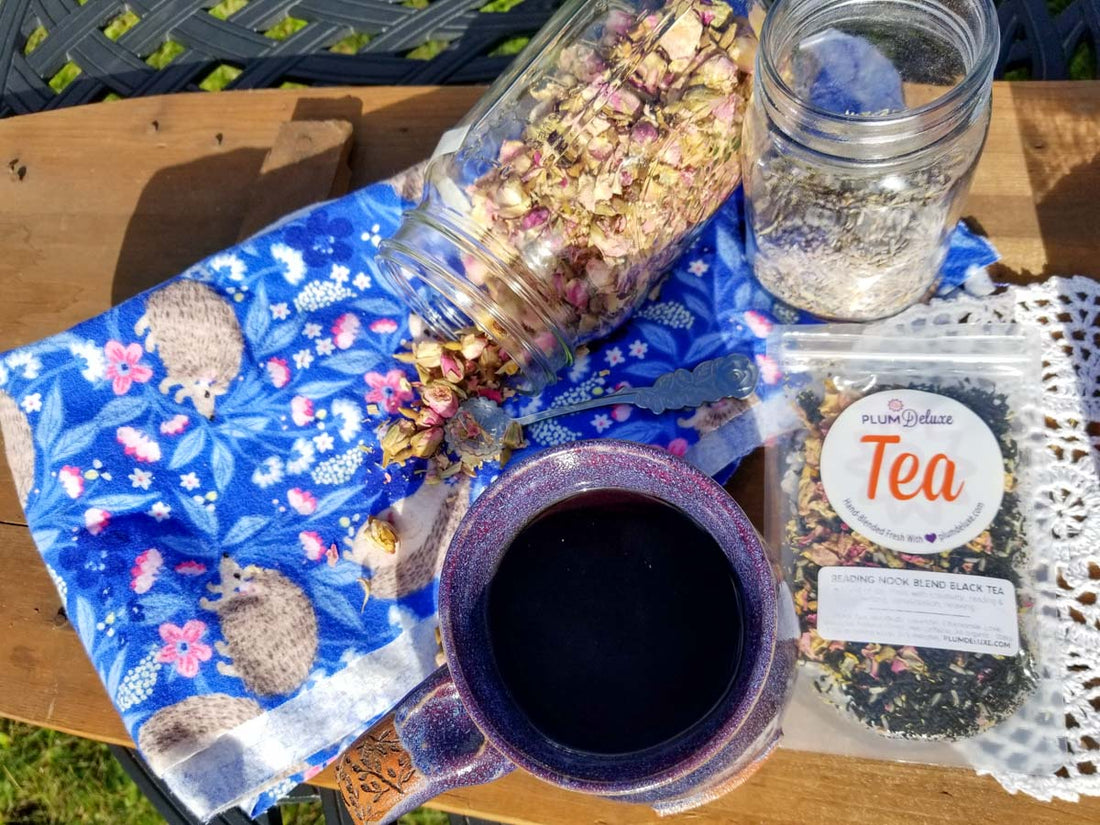
![Holiday Tea Variety Pack [6-Pack Variety of Flavors]](http://www.plumdeluxe.com/cdn/shop/files/holidayTeaVarietyPack.png?v=1759777907&width=165)


